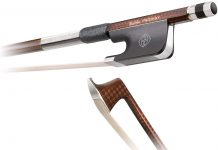The short answer is yes, but there are certain airlines that treat cellos better than others. Below we’ll provide an overview of which airlines are cello-friendly.
Imagine the following scenario:
Well, I was forced to a situation where I really had to – it was either get off the plane or give the baggage handler my cello. And so I did something that I’ve never done in my whole life, which was to give my Guarnerius to a baggage handler. I talked to him a little bit. He promised me he would make it secure and that was that. We took off. We got up. It was one of the bumpiest runways I’ve ever been on, was my first fright.
-Katz, NPR Interview
Traveling with a cello is always a stressful situation. Even if the airline lets the cello on board, there is no guarantee the cello will arrive in one piece. There are countless horror stories on the internet of cellos which arrive completely smashed. In order to ease your mind, we highly recommend getting cello insurance that covers flight damage. Check with your instrument insurer (sometimes bundled with homeowner’s insurance) to make sure it includes damage your cello from airlines.
Over the years, airlines have come to realize that cello players still need to be able to fly with their cello and have gone from undocumented disasters (of leaving it up to the ticket counter people) to super restrictive travel, and now back to more acceptable rules and regulations of flying with a cello.
Here we have outlined some of the cello-friendly airlines as well as some tips you can use to fly safely with your bass. Feel free to share your tips for traveling with a cello in the comments!
Most Cello-Friendly Airlines
The International Federation of Musicians (IMF) maintains a list of airlines that it considers best for flying with cellos and other musical instruments. The airlines IMF recommends are: Air Canada, Alaska Airlines, American Airlines, Delta Airlines, Eva Air, JetBlue, Southwest Airlines, and, surprisingly enough, United.
Southwest Airlines
Southwest Airlines is the most cello-friendly airline around. Fares on Southwest flights usually are lower than other airlines, but they also allow two checked bags for free so if you’re willing to check your cello, this is certainly a low-cost option. Southwest has a reputation for being very careful with musical instruments. *UPDATE* Unfortunately, they recently changed their policy and no longer allow you to buy an extra seat for your cello.
So what’s the catch? Southwest flights aren’t usually direct to major cities, so you may end up with a long travel day. You can read more about Southwest’s baggage policy here.
Jet Blue
Jet Blue is another great airline for traveling with cellos. Your first bag (under 50 lbs) is free, but unfortunately, this will rarely cover your cello and you may be charged an oversize fees.
Jet Blue isn’t the only airline that sometimes tacks on these fees. Make sure you check the baggage policy of the airline you choose before you fly. You can read Jet Blue’s baggage policy here.
Major Airlines Instrument Travel Policies
| Airline | Cabin Seat Baggage | Checked Baggage |
| Alaska Airlines Baggage Policy | Large musical instruments may be accepted as cabin-seat baggage w the purchase of full adult fare. | Standard checked bag policy applies. |
| American Airlines Instrument Policy | Instruments that are too large to be stowed in an approved carry-on stowage location, or are too fragile to be checked may still be taken in the cabin and transported in a passenger seat if certain requirements are met, including the purchase of a ticket for an additional seat. | Musical instruments can be checked as baggage. Liability for damage to checked instruments is limited under certain conditions explained on the AA website and in the contract of carriage. |
| Hawaiian Airlines Baggage Policy | Passengers may purchase a seat for their fragile and/or bulky items. | Most musical instruments may be checked if certain requirements are met. |
| JetBlue Airways Instrument Policy | Musical instruments of a size that prevents the instrument from being handled as normal carry-on baggage will be accepted in the cabin and are subject to certain requirements. | A musical instrument will count as one piece of checked baggage and are subject to all applicable baggage fees. |
| Southwest Airlines Instrument Policy | In the event you are traveling with a musical instrument that cannot be stowed safely as carry-on luggage, or is fragile in nature, | |
| United Airlines Instrument Policy | A customer may purchase a ticket for a musical instrument which is too fragile or bulky to be handled as checked baggage. Upright basses and guitars will not be accepted as cabin-seat baggage. | Checked instruments must meet certain requirements, including being packed in a hard-shell case. |
For other airline baggage policies and to see if your airline is recommended for flying with musical instruments, you can check out these airline ratings by the International Federation of Musicians.
Preparing for Your Trip
Call Your Airline
The best thing you can do before flying with your cello is to call your airline. Regardless of what the website says about flying with instruments, you want to make sure you talk to the airline specifically about your situation. You can ask them directly about buying an additional seat for your cello to make sure that it’s an option and is available (and to see if they will allow you to earn airline miles from that extra seat).
Leave Your Case Unlocked
The TSA will need to inspect your cello and if your case is locked, it will not be loaded onto the plane. You’ll be in for a big surprise when you get to your destination!
Buy a Hard Case
We highly recommend buying a hard case for your cello. There are some cases which are intended for airline travel. Read the descriptions carefully to make sure your bass case is sturdy enough to be checked on flights. You can also check out our reviews of the best hard cello cases.
We also recommend buying a flight case for your cello. These are hard cases that go over typical hard cases for cellos to provide extra protection when the baggage handlers are tossing around your cello loading it onto the plane.
Other Considerations
- Frequent Flier Miles: If you choose to buy an extra seat for your cello, you may qualify to double-dip on airline miles. This way you will feel like you’re at least getting something in return for having to buy an extra seat. Make sure you check with your airline allows you to collect airline miles if a human is not sitting in the seat. United as of right now allows you to double-dip, but Delta does not. Read this article for more information.
- In case your cello does get damaged by the airline, we recommend buying cello insurance. Check with your insurance plan to see if you can bundle cello insurance in with it. Here’s a great guide on buying musical instrument insurance.
- Be courteous to the check-in staff. They don’t deal with checking cello on a daily basis. Rude people tend to pay more for their checked baggage. Politely tell them that you travel with your cello all the time and that you are a professional musician.
We hope this article helped you prepare for your next flight with your cello. Navigating the complex baggage policy pages of all of these airlines is complex, but with some initial research and a bit of luck at the check-in counter, you should be able to travel with your beloved cello!
Table of Contents







Pretty hard to fly with a cello. Their ailerons aren’t the greatest for lift.